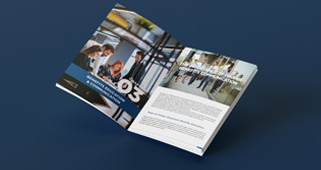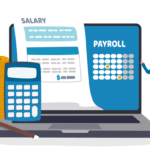In today’s fast-paced business landscape, where every minute counts, optimizing operational processes is crucial for success. Among these processes, benefits administration stands out as a critical aspect of managing a workforce effectively. Streamlining benefits administration not only saves time and resources but also enhances employee satisfaction and organizational efficiency. In this blog post, we delve into the myriad benefits of streamlining benefits administration and how it can be a game-changer for businesses of all sizes.
Understanding Benefits Administration
Before delving into the benefits of streamlining benefits administration, let’s first understand what it entails. Benefits administration encompasses the management of employee benefits programs, including health insurance, retirement plans, paid time off, and other perks offered by employers. It involves tasks such as enrollment, eligibility verification, plan selection, compliance management, and communication with employees regarding their benefits packages.
The Challenges of Traditional Benefits Administration
Traditional benefits administration processes often involve cumbersome paperwork, manual data entry, and fragmented systems. These outdated methods are not only time-consuming but also prone to errors, leading to compliance issues and dissatisfaction among employees. Moreover, managing multiple benefit plans from different providers can further complicate matters, increasing administrative overhead and reducing efficiency.
The Benefits of Streamlining Benefits Administration
- Enhanced Efficiency: Streamlining benefits administration involves automating repetitive tasks, centralizing data management, and integrating systems for seamless workflow. By doing so, HR professionals can save time on administrative tasks and allocate their resources more strategically, focusing on value-added activities such as talent development and employee engagement initiatives.
- Cost Savings: Manual benefits administration is labor-intensive and can incur significant costs in terms of personnel hours and resources. By streamlining processes and reducing reliance on manual intervention, organizations can realize cost savings in the long run. Moreover, consolidating benefit plans and negotiating with vendors for better rates can further optimize expenses.
- Improved Accuracy and Compliance: Manual data entry is prone to errors, leading to discrepancies in employee records and compliance issues with regulatory requirements. Streamlining benefits administration through automated systems reduces the likelihood of errors and ensures greater accuracy in data management. Furthermore, it facilitates compliance with regulations such as the Affordable Care Act (ACA) and the Employee Retirement Income Security Act (ERISA), mitigating the risk of penalties and legal liabilities.
- Enhanced Employee Experience: A smooth and hassle-free benefits administration process contributes to a positive employee experience. When employees can easily access and manage their benefits through user-friendly interfaces, they feel valued and supported by their employers. Moreover, timely communication regarding benefit options and changes fosters transparency and trust within the organization.
- Greater Flexibility and Customization: Streamlining benefits administration allows organizations to offer a wider range of benefit options and customization features to meet the diverse needs of their workforce. Whether it’s offering flexible spending accounts, wellness programs, or tailored retirement plans, organizations can design benefit packages that align with their employees’ preferences and priorities.
- Data-Driven Insights: Centralizing benefits data in a unified system provides organizations with valuable insights into employee preferences, utilization patterns, and cost drivers. By analyzing this data, HR professionals can make informed decisions regarding benefit plan design, vendor selection, and resource allocation, ultimately optimizing the overall benefits strategy.
- Competitive Advantage: In today’s competitive labor market, offering attractive benefits packages can give organizations a competitive edge in attracting and retaining top talent. Streamlining benefits administration not only allows organizations to offer comprehensive benefits but also demonstrates their commitment to employee well-being and satisfaction, thereby enhancing their employer brand.
Implementing Streamlined Benefits Administration
While the benefits of streamlining benefits administration are clear, implementing these changes requires careful planning and execution. Here are some steps organizations can take to streamline their benefits administration effectively:
- Assess Current Processes: Conduct a thorough assessment of existing benefits administration processes to identify inefficiencies, pain points, and areas for improvement.
- Invest in Technology: Explore benefits administration software solutions that automate tasks, integrate with existing HR systems, and provide self-service capabilities for employees. Platforms like Benely.com offer comprehensive benefits administration solutions tailored to the needs of modern organizations.
- Standardize Policies and Procedures: Establish standardized policies and procedures for benefits administration to ensure consistency and compliance across the organization.
- Train HR Staff and Employees: Provide training and support to HR staff and employees on the new benefits administration system to facilitate a smooth transition and maximize utilization.
- Monitor and Evaluate Performance: Continuously monitor the performance of the streamlined benefits administration system and gather feedback from stakeholders to identify areas for further optimization.
Conclusion
Streamlining benefits administration is not just about reducing paperwork or cutting costs; it’s about optimizing processes to enhance organizational efficiency, employee satisfaction, and competitive advantage. By leveraging technology, standardizing procedures, and focusing on data-driven insights, organizations can transform their benefits administration practices and reap the numerous benefits it offers. In an era where talent is a key differentiator, investing in streamlined benefits administration is a strategic imperative for businesses aiming to thrive in the modern workforce landscape.
With the right approach and commitment to continuous improvement, organizations can unlock the full potential of their benefits programs and create a workplace where employees feel valued, supported, and empowered to succeed. And with platforms like Benely.com, the journey to streamlined benefits administration becomes even more achievable, enabling organizations to stay ahead in an ever-evolving business environment.






